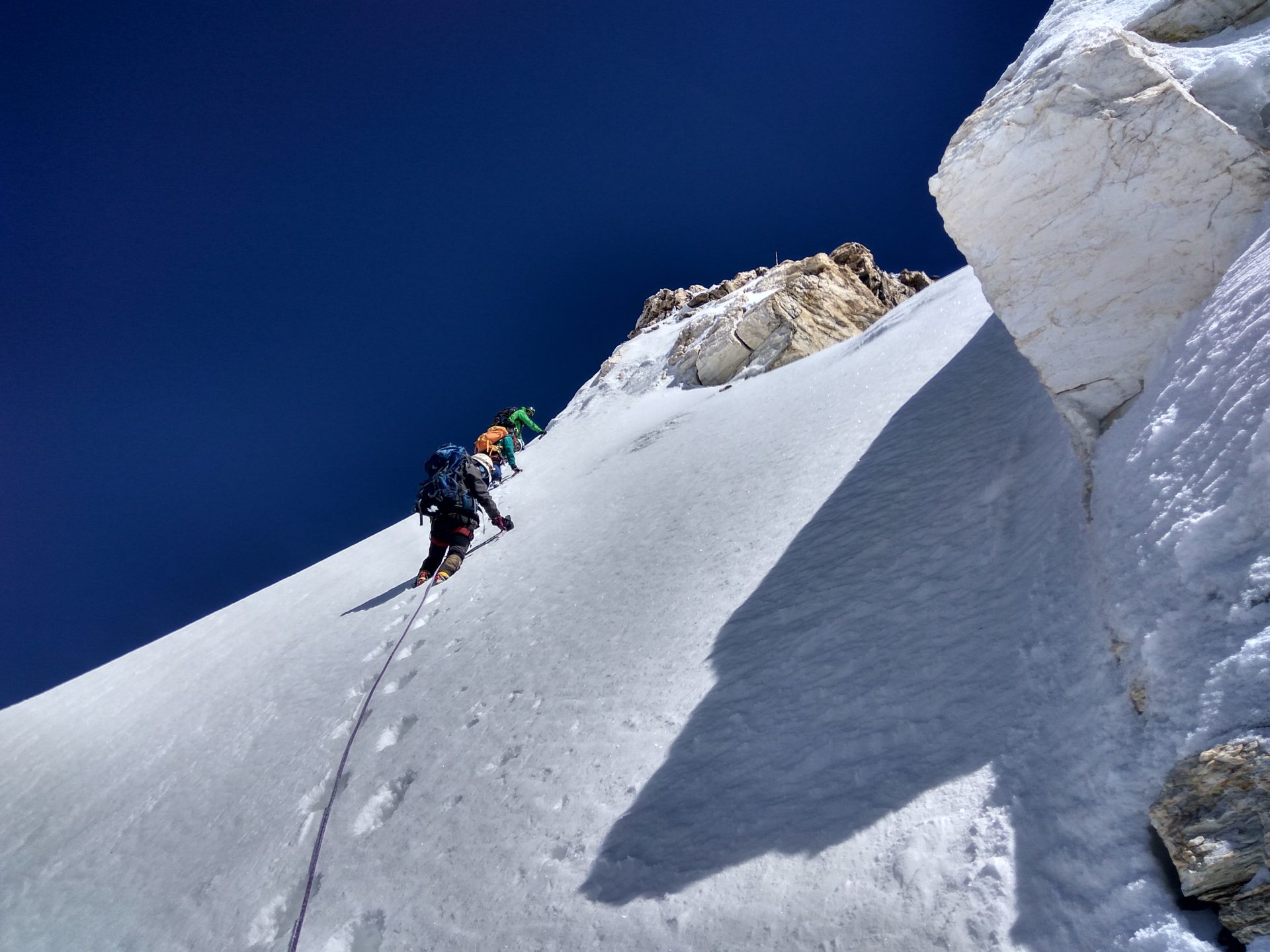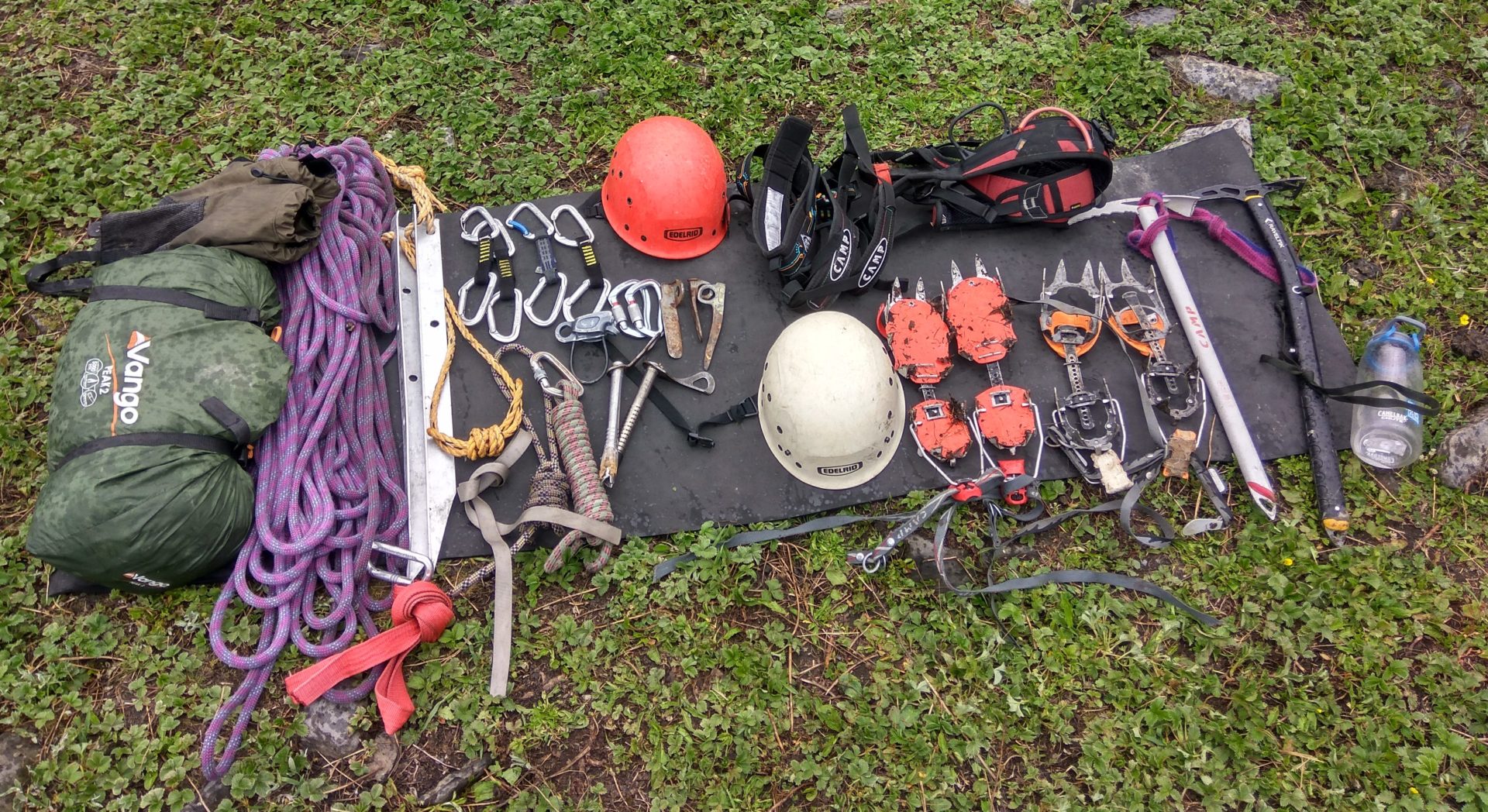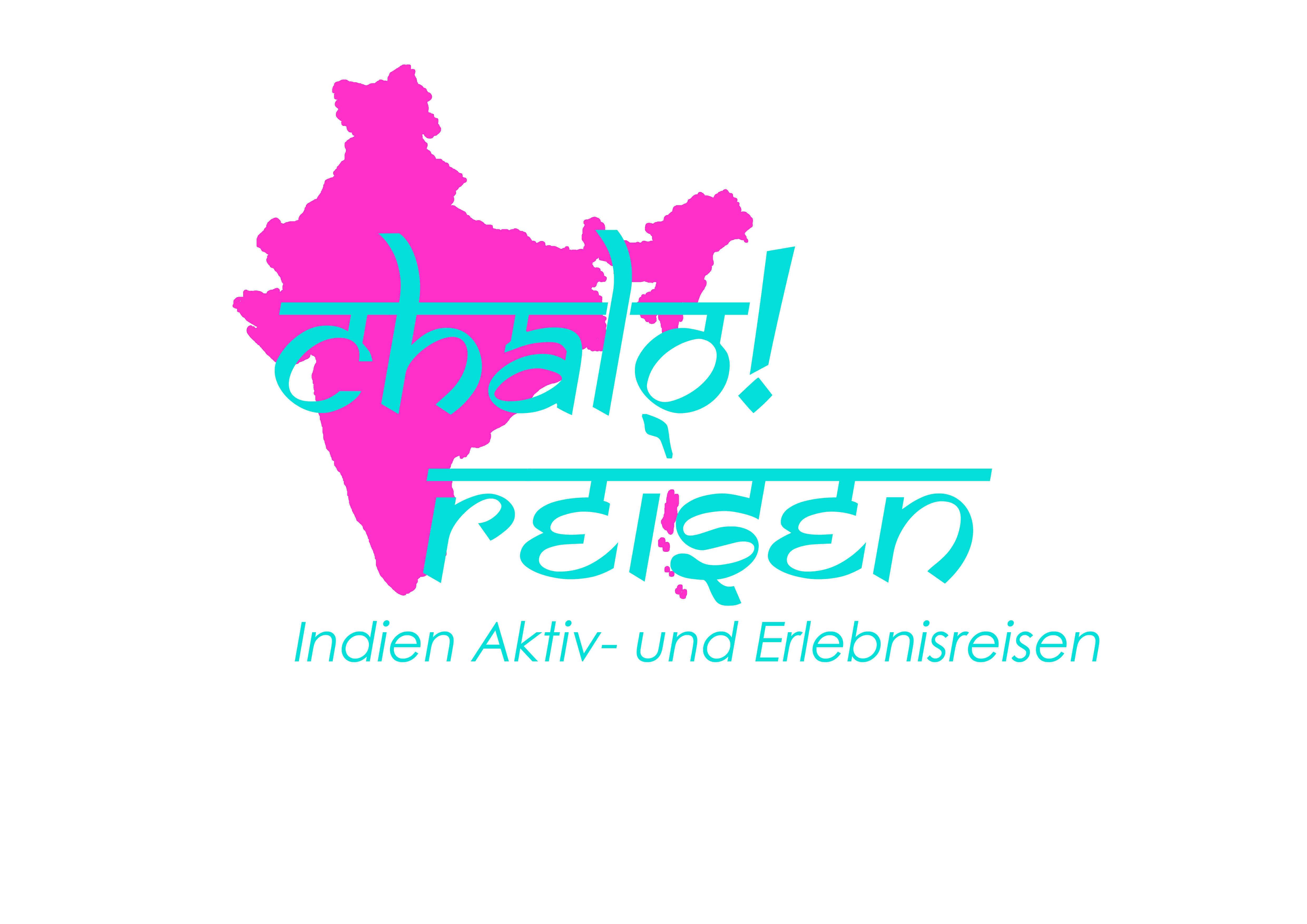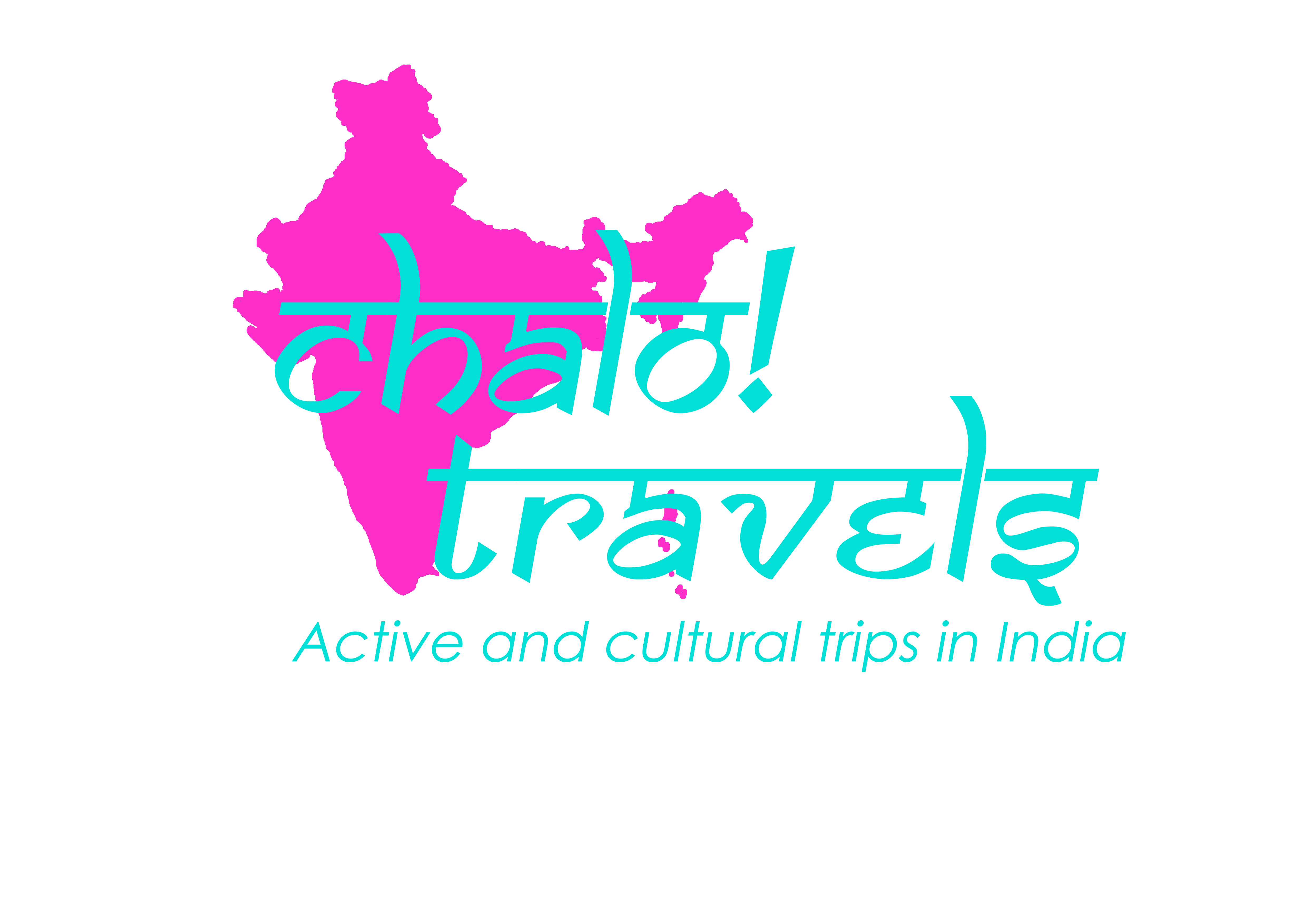- Sport & Abenteuer Reisen
- Klettern & Expeditionen
Overview
The technically demanding Hanuman Tibba is the highest mountain in the Dhauladhar mountain range. It towers over the entire mountain world and is probably the most overwhelming peak in this area! A must for every mountaineer!
This peak takes its name from the monkey god Hanuman, because its color is orange and its shape is huge and humpback. Enjoy the wide view of the surrounding snow-capped mountains of the Pir-Panjal and Dauladhar mountain ranges!
Program
Day 1 Arrival Delhi/ Transportation to the hotel and night trip to Manali
We will pick you up from the airport and take you to your hotel. After a little rest we explore Delhi until we take the bus (14 hours overnight) in the afternoon to Manali. Overnight stay on bus (B/-/-)
Day 2 Arrival in Manali (2050 m)
Today we reach Manali and check into our hotel. Today is a day of rest. We also get to know the entire team and control and distribute the equipment. We end the day with a dinner with the whole team. Overnight stay at the hotel (B/-/D)
Day 3 Manali to Dundhi (2890 m) by car, then trek to Beaskund (3691 m)
After we drIve for about an hour from Manali to Dundhi, our trek to the base camp (3691 m) at Beas Kund starts.
It is a five-hour trekking tour through the green Solang valley along rivers and later over rocky moraines. Overnight in a tent (B/L/D)
Day 4 Rest day, equipment adjustment, simple mountaineering theory and exercises
We hike to our nearby training ground to get used to our equipment and practice climbing techniques at the glacier. Overnight in a tent (B/L/)D
Day 5 Base Camp to Camp 1 (4596 m) back to Base Camp (3691 m)
For the transportation of luggage and acclimatization it goes steep up to our Camp 1. After our load is stowed away, we go down again to the Base Camp. A good day for acclimatization! Overnight in a tent (B/L/D)
Day 6 Base Camp to Camp 1 (4596 m)
Today we go up to Camp 1 and we have to take all our luggage with us. A few snowfields have to be crossed until we reach the top of our small camp. Overnight in a tent (B/L/D)
Day 7 Camp 1 to Camp 2 (4980m)
Today it goes steep up. Equipped with crampons,gaiters and ice picks, you can climb up the rope through snow and over loose rubble on the 5000 meter high Tentu Pass. The ascent is often between 70° and 80° steep and therefore very strenuous. After crossing the pass, we cross the Rainghard Glacier to our Camp 2 . Overnight in a tent (B/L/D)
Day 8 Camp 2 to the summit camp (5490 m)
Today we have to trek around the summit of Hanuman Tibba. The mountain still rises 1000 meters high before our eyes. First, it goes down the glacier a little bit. The trek over the loose rubble of the moraine is very tedious. Later it goes up again. Overnight in a tent (B/L/D)
Day 9 Summit Camp to the summit (5932 m) back to the summit camp
A long day that leads us steep over ice to the summit of Hanuman Tibba. What a feeling of standing on the highest point of the Dauladhar mountain range! Overnight in a tent (B/L/D)
Day 10 Summit Camp to Camp 2
Although we are on our way back, we still go over the stony moraine slightly uphill to camp 2. overnight in the tent (B/L/D)
Day 11 Camp 2 to Base Camp
A long day that leads us back to the green flower meadows at Lake Beas Kund. We are roped off the Tentu Pass. First to Camp 1 and then all the way down to Base Camp. Overnight in a tent (B/L/D)
Day 12 Base Camp to Dundhi and then drive to Manali
After all our equipment and luggage is sorted, we head back to Dundhi on a slight descent. Happy we reach Manali again and enjoy a hot shower and a soft bed. At a dinner together we celebrate our success! Overnight stay at the hotel (B/L/D)
Day 13 Buffer day for acclimatization and bad weather Overnight in a tent (B/L/D)
Day 14 Return to Delhi
In the afternoon we take the bus back to Delhi (14 hours, overnight on the bus) (B/-/-)
Day 15 Return to your country
Transfer first to the hotel, then to the airport. (B/-/-)
Services
- Trained mountain guides
- Cook and helper
- Load horses or carriers to Base Camp
- Accommodation in 2-man tents
- Kitchen tent at Base Camp
- simple full catering
- 2 x overnight stays with breakfast at the hotel in Manali in a double room
- 2 x Dinner in Manali
- 2 nights with breakfast at the hotel in Delhi in a double room
- Airport transfer
- Air-conditioned Volvo Bus Delhi-Manali/Manali-Delhi
- complete transport
- complete expedition equipment (helmet, crampons, shoes, gaiters, ice pick, ropes, carabiner, climbing harness, etc.)
- Small Sightseeing Tour Delhi
- international flight
- IMF Permit
- Visa
- unmentioned meals and drinks
- Tip
- personal trekking equipment (dresses, trekking shoes, headlamp, backpack, etc.)
Highlights

Hanuman Tibba Expedition 
Hanuman Tibba Expedition 
Summit Camp 
Summit Day 
View 
Camp 
Hanuman Tibba Expedition 
Hanuman Tibba Expedition 
over Moraines 
Rations 
Equipment 
dinner in the tent 
Summit Day 
over Moraines 
Hanuman Tibba Expedition 
Summit 
Summiting 
in tent 
Hanuman Tibba Expedition 
Hanuman Tibba Expedition 
over the Reigard Glacier 
Up to Tentu Pass 
… in the morning 
Preperation 
Trek to Beaskund lake 
first day 
Beaskund
Prices and Dates
Diese Expedition kann von April bis November als Privattour durchgeführt werden. Jedoch nicht während der Monsunzeit von Juli bis September.
This expedition can be carried out as a private tour from April to November. However, not during the monsoon season from July to September.
1 participant from 2699 € per person
2 participants from 2249 € per person
3-4 participants from 2099 € per person
5-6 participants from 1849 € per person
100 € single room supplement for room, no one-man tent possible
Tour Info
Requirements
Mountaineering experience is not an absolute prerequisite. If you have never climbed a mountain before, you can extend the tour by a few days to train more intensively with the mountaineering equipment. You should be physically and mentally fit for the ascent. The ascent is at your own risk. A summit ascent cannot be guaranteed.
Information about our Expeditions in the Indian Himalaya with Chalo! Travels
- Mountain guide and team
On all our expeditions we have at least two trained local mountain guides with us. Our mountain guides have all completed all Indian mountaineering training and regularly lead expeditions and mountaineering courses. They have climbed the peaks several times and know the terrain excellently. All our mountain guides speak English.
In addition, there is a local team that will accompany us at least until the base camp. Which includes cook, helpers, horsemen with horses or Nepalese carriers, depending on the type of trek up to the base camp.
All our team members have been working with us for years, are very friendly, professional and always striving to give our guests a great experience and fulfill their wishes. Their English is rather mediocre or non-existent, but this is not necessarily a hindrance to communicating with them.
2. Summit
The summits have a different level of requirements from simple to difficult. Even with simple ascents of the summit, certain climbing techniques are required, as well as the use of equipment. On each of our tours we include days of practice to learn or repeat techniques and practice using crampons, ice picks, gaiters and using the rope. Thus, even inexperienced participants can participate in a summit expedition with a more difficult degree. The peaks are between 5000 and 6500 meters high.
The first days of the expeditions to the base camp are more like trekking days. The daily routes are between five and eight hours long (with breaks) and an average increase of around 500-800 metres of altitude is completed.
In between, rivers may have to be crossed. The paths are partly well developed, but sometimes also almost non-existent. On our trekking routes there are hardly any villages between, so we will take enough food for the whole tour.
From the base camp we will reduce our team and only travel with our guests and the mountain guides. While the rest of the team will stay in base camp. Meals will be easier, the daily routes can be up to 12 hours and especially on the day of the summit we start in the early morning hours around 2:00-3:00. From Base camp we will be on the road with all the equipment and depending on the situation, the mountaineering team will fix the ropes.
In all our expeditions we have planned 1-3 additional days in case the weather conditions are bad or we need more time for a good acclimatization. If we reach the summit without these additional days, our guests have a hotel in Manali at their disposal.
3. Daily routine till Base camp
7: 00 am Get up with tea
7:30-8:30 am Breakfast
7:00-9:30 am Dismantling of the camp
8:00- 9:30 am Start Trek
1:00 pm Lunch on the way
3:00-5:00 pm Arrival at the camp and camp construction
3:30-5:30 pm Snacks
7:00 pm Dinner
4. Altitude and altitude sickness
This is a very important topic that should not be underestimated, especially during our expeditions in the Indian Himalayas. At altitudes above 3500 m, our body has to slowly get used to the low air pressure, which also causes less oxygen to enter our lungs. The first signs of altitude sickness are headaches, which are accompanied by dizziness, nausea, insomnia and loss of appetite. It becomes problematic when water accumulates in the lungs and brain, and edema occurs. Then only the immediate descent to lower altitudes will help. To prepare for the heights on our treks, we will spend some nights in the same camp and do so-called “loadferrys”. This means that we transport some of our luggage to the next higher camp the day before and get back to the low camp. During the trek we will slowly ascend to acclimatize. If we notice that there are problems with our guests (each person is otherwise able to acclimatize, regardless of age, gender and fitness level), either the entire tour group or the participant with a team member descends/returns. In addition, it makes sense to take an emergency drug for altitude sickness. For this, it is best to inform yourself at the pharmacy or seek advice from the travel doctor. In addition, we will have oxygen with us for the emergency.
Our expeditions are organized in such a way that the complete tour from Delhi to Delhi is usually possible in two weeks. Nevertheless, we advise our guests to extend this period as far as possible in order to have more time for the actual acclimatization.
5. Luggage
On our expeditions from Basecamp, every expedition participant is responsible for carrying his or her personal clothes and belongings, as well as for his own equipment and some of the food and team equipment (ropes, materials, tents, cooking utensils). The total weight will be between 15 and 20 kg. Until base camp we will have the support of carriers and load horses. Here is the packing list for our expeditions.
6. Meals
During the trek to the base camp there will be a vegetarian full catering. Water is either boiled or we have a water filter with us.
Breakfast (daily selection):
Coffee/Tea
Oatmeal porridge/muesli/cornflakes/Indian porridge
Indian Breakfast/Toast/Eggs/Jam/Butter/Cheese/Honey/Chocolate Spread
Sliced fruit/vegetables
Lunch (mostly lunchbox), sometimes warm in the camp:
Sandwiches/Indian (rice, chapati, vegetables)/eggs/potatoes
Juices
Chocolate
Fruit
Snacks:
Tea/coffee
Cookies
French fries/Indian snacks
Soup
Dinner (depending on the length of the trek, a mix of Indian/Chinese/Continental):
Vegetable dish
Lentil dish
Rice/noodles
Chapati
Salad
Dessert
7. From Base camp, meals are more simple with carbohydrate-rich food
Breakfast:
Tea, Coffee
Oatmeal, muesli, rice
Lunch (self-carried and divided for all days):
Dried fruits and nuts
Chocolate bar/muesli bar
Boiled potatoes/eggs
Cheese
Fruit
Snacks:
Biscuits, Soup, Instant Noodles, Tea/Coffee
Dinner:
Noodles/rice/instant dishes/couscous
8. Accommodation and Camp
We have light 2-3 man tents, sleeping bags with comfort zone up to -5°C, as well as good mats. It is recommended to bring personal indoor sleeping bags.
In addition, we have a spacious dining tent with tables and chairs, and a kitchen tent for the team up to base camp. For expeditions of up to 4 people, the kitchen tent can also act as a dining tent at the same time.
From Base camp we will not have a kitchen and dining tent.
9. Temperatures
In the Himalayas, temperatures fluctuate widely. While it can get warm up to 25°C during the day and the sun is not only warming but also very intense (sun protection is a must), it can also cool down at night well below the minus degrees with temperatures down to -10° C, especially in the months end of September and October, as well as in June and at altitudes from 4500 meters. There may also be weather changes with snow and storms. Bad weather can always be a hindrance for a successful climb.
-
5
Überschrift
Lorem ipsum dolor sit amet, consetetur sadipscing elitr, sed diam nonumy eirmod tempor invidunt ut labore et dolore magna aliquyam erat, sed diam voluptua.






